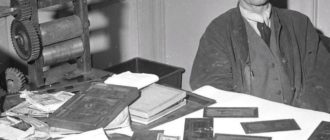
American silver holds a special place in the antiques market. The country has a long tradition of working with precious metals, which were formed by craftsmen who were free from the restrictions and conventions of the Old World. In American silver, artistic creativity was combined with innovative techniques that emerged from the development of industrial production. Today, the products of famous US jewelers adorn the expositions of the best museums in the world.

History of American Colonial Silver
American silver has been imported into Europe since the 16th century. The suppliers were Spanish colonies located in Peru and Mexico. Jewelry production in South America did not exist then coins were minted from the precious metal and sent to Spain. The first workshops appeared in the northern part of the continent, where immigrants from Great Britain settled, who brought with them skills in working with precious metals.
Early American silver was distinguished from European silver by its bold design and variety of techniques. In the colonies, there were no restrictions imposed by the guilds in relation to the circle of persons entitled to make and sell precious items. For this reason, talented apprentices, blacksmiths and even dentists became jewelers. Any master who mastered the technique of working with metals could realize himself. Many of them combined professions and simultaneously worked in several directions. The work of jewelers was complicated by the lack of raw materials, since they did not have access to South American deposits.

Silver workers melted worn-out coins and old utensils that were out of fashion. At the same time, for a long time in the colonies there were no strict requirements for the purity of the alloy, therefore, craftsmen often experimented and added other metals to silver, which made it possible to get out of the situation and did not affect the appearance of the products.
Paul Revere
One of the founders of American silversmithing was the engraver and industrialist Paul Revere. He created objects of unusual shapes with original designs and was the first in the United States to establish a mass production of tableware and accessories at his factory in Boston. After the end of the war between the North and the South, society was engulfed in a consumer boom, so silver was in high demand. Revere installed rolling machines at his plant, which greatly reduced the cost of production and made it affordable for the middle class. Neoclassicism was in great fashion, which can be clearly seen in the tea ware of this period.

Silver in the USA from the time of the republic to the present day
After the proclamation of US independence, the US government put things in order in the jewelry industry. The mint in 1792 adopted the standard for silver the alloy had to contain at least 89.2% of the precious metal. The highest test of 92.5% did not differ from that adopted by British law. Strict government regulation made the work of the workshops somewhat difficult, but with the discovery of the Comstock deposit in Nevada in 1858, the problem with the lack of raw materials was finally resolved.

Rococo style
The Rococo style, popular in Europe, supplanted simple and elegant neoclassicism by 1830. The design of the products became much more complicated, the decoration was dominated by floral motifs made in the repusse technique. Founded in 1837, the Tiffany Co trading house soon became a trendsetter in jewelry fashion. The company was the first to introduce mailing of cataloged goods, and in its stores it sold products from famous workshops: Grosjean Woodward, William Gale, Gorham Mfg Co.
Products were marked with double brands the master and the seller. At the turn of the 20th century, the decorative arts of the United States were entirely influenced by modernity, which had come from Europe. Smooth patterns and floral motifs adorned almost all items from vases to revolver handles. The masters presented their best creations at the 1893 World Columbia Exhibition in Chicago. The centerpiece of the exhibition is a Tiffany Co vase in ceramic and gold, recognized as an outstanding masterpiece of Art Nouveau jewelry.

Art Deco
Art Deco has become the dominant style of the Gorham factory, known for its Martele line, which is characterized by unusual curved shapes and embellishments with waves, floral designs and feminine figurines. The silversmiths worked by hand and used soft silver with a minimum of impurities. The division of labor was practiced at the factory: the blacksmiths gave the desired shape to the object, and the embossers applied the patterns. It took about 140 hours to make one vase or coffee pot.

Artistic experimentation continued until the 1930s, and outstanding art deco masterpieces today adorn the displays of many museums. At the same time, American industry was mass-producing avant-garde products that were sold in conventional department stores. Paul A. Lobel’s collection of tea ware was popular with connoisseurs of art and became an exhibit at the 1934 exhibition at the Metropolitan Museum, but was not in demand among buyers, since the material well-being of the population was seriously undermined by the Great Depression.
In the middle of the 20th century, silverware manufacturers faced serious competition from stainless steel tableware manufacturers. However, many companies continued to work with silver until the early 1980s. One of the famous manufacturers is the International Silver Company, whose works have been repeatedly recognized as icons of modern design. Today, Tiffany Co occupies a leading position in the market the manufacturer’s sterling silver is in demand all over the world.





















